Last Chance to Catch NYC's Holiday Notalgia Train
We met the voices of the NYC subway on our nostalgia ride this weekend!


This is an article by photographers and authors James and Karla Murray, who lead our food tour of the disappearing storefront of the East Village. It’s the 15th anniversary of the first edition of book and they’ve written an article for us recalling the process with beautiful photos and quotes from the artist they documented.
“Broken Windows- Graffiti NYC” started not as a book project, but more as a hobby of ours walking New York City’s abandoned and active train lines, scouring the outer borough’s empty lots, warehouse districts and industrial zones for artwork we found exciting. We began photographing the work in the mid 1990s with our 35mm film camera, and realized the art forms temporary nature. As word got around among the artists that we were amassing a good sized collection of graffiti photographs, we gradually got to know artists themselves and conducted interviews with them with a small hand-held tape recorder.
As our love of graffiti continued, we learned about lettering styles, the importance of a good hand-style and even the meaning behind the work. Graffiti has letters at its core, manipulated as far as the artist’s imagination could take them. Wild Styles, simple styles… all of it was fascinating and beautiful. At the same time we were documenting graffiti art, we also began to notice that many mom-and-pop shops in the city were disappearing, dramatically changing neighborhood streetscapes and character. The neon and hand painted signage of the storefronts captivated us, just like the graffiti murals. As we had done with the graffiti artists, we began to interview the shop owners and record their history. Documenting graffiti art inspired us to open our eyes to the many distinct neighborhoods of the city and record its life and texture. This book was first published in 2002 and in 2010, we released a revised hardcover edition with 70 additional pages including more full-color photos.
/**/
Here is a selection of images and graffiti artist interview excerpts from the revised edition:
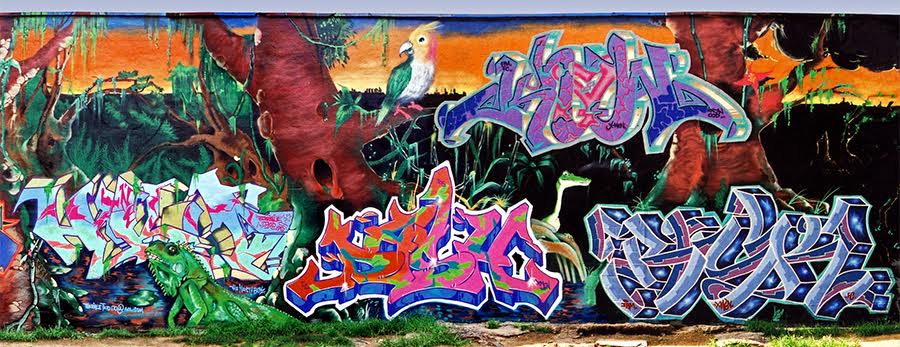
Artists: TKID170, KNOW by WANE (COD), DASH (FC), RISK (FC)
You just don’t reproduce somebody’s shit. You interpret what you learn and produce it your own way. That’s what I think, as far as people teaching people, it should be like. Because there’s cats who just trace each other’s shit and their shit look like this guy’s shit. And there’s no glory in that, because you’re never gonna get respect. You’re just biting somebody else’s shit. – DASH (FC)

Artist: LADY PINK
I am bored to death of the same old styles people are using. I try to be different and use comical or character-based styles. I try to be innovative and not stuck in the same old wild style I used back in the days. Now I disregard style altogether and go my own way. I try to keep an element of fun in my artwork and try not to be hard-core hip-hop. I also don’t like a lot of text in my pieces. I am influenced by Salvador Dali in my surreal style and also by Georgia O’Keefe and Dr. Seuss. I strive for originality and the girl writers’ DOÑA and MUCK do that as well. In Europe, a lot of innovative stuff is coming out, which is really great. I think graffiti artists’ weakness often lies in the composition of walls, so when SMITH and I work with others on a large production, we pass along our sketches for all the artists to add their ideas before painting the wall. – LADY PINK
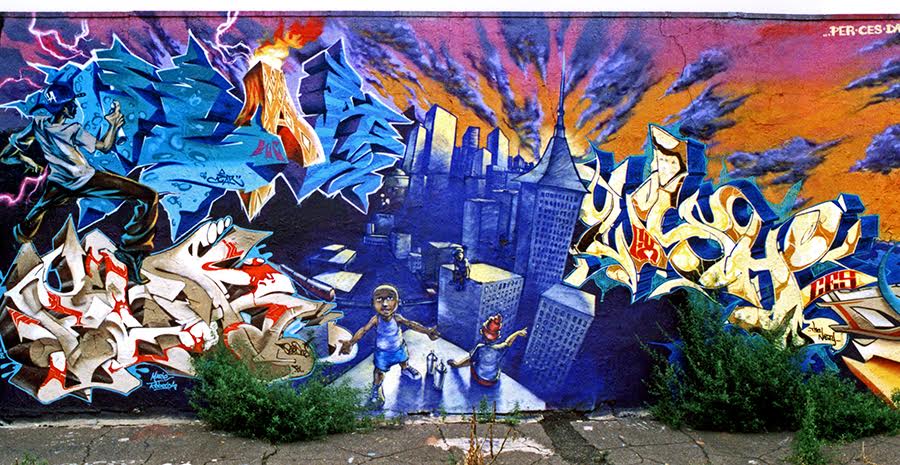
Artists: MEAR, PER ONE, WISH by CES ONE DAIM, Characters by TASEK

The Bronx
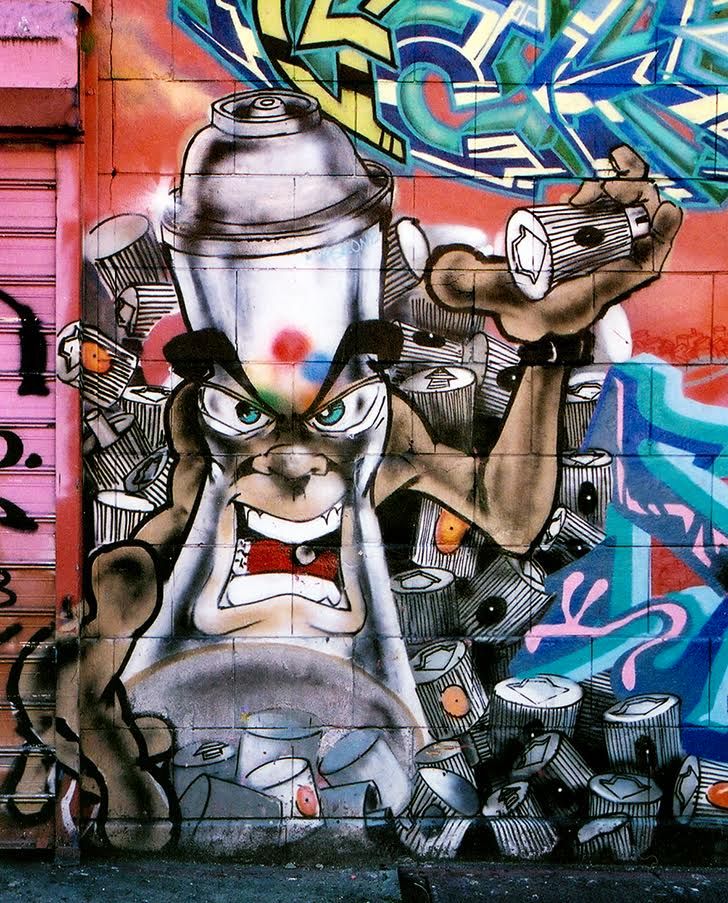
Artists: WIZ ART, VASE, KINGBEE, DEKAE (UW)
Spray paint is a great tool. The can itself is like a transformer. You can transform the shape and size of the lines you are painting, like one minute it can turn into an airbrush, the next to a fat cap line, to a bomb, just by changing and manipulating the way you want it to spray. You can also change the context of the can. If you don’t like the way Rusto is spitting out, you can take the elements that are inside the can and transfer what’s in there to a Krylon so you won’t get any delay or skips. There are a lot of things you can do with that little can. Many people walk by when I’m painting and can’t believe that I can do these lines with just a can and how I can take it so deep to a hairline. They can’t believe that I’ve got so much control over the can. It’s all about how you manipulate the can, it ain’t controlling you, and they are amazed by this. People think I come out with brushes and do all the details, but it’s a 12-ounce can that I do it with. – VASE

Artist: PER ONE (FX)

Artists: JEST, NES
I used to piece but I’m only bombing now. I like to paint along the highways in spots where no one else can get to and that you can see from both directions when driving. That’s the kind of shit that’s hyping up these younger kids to do graffiti. – JEST
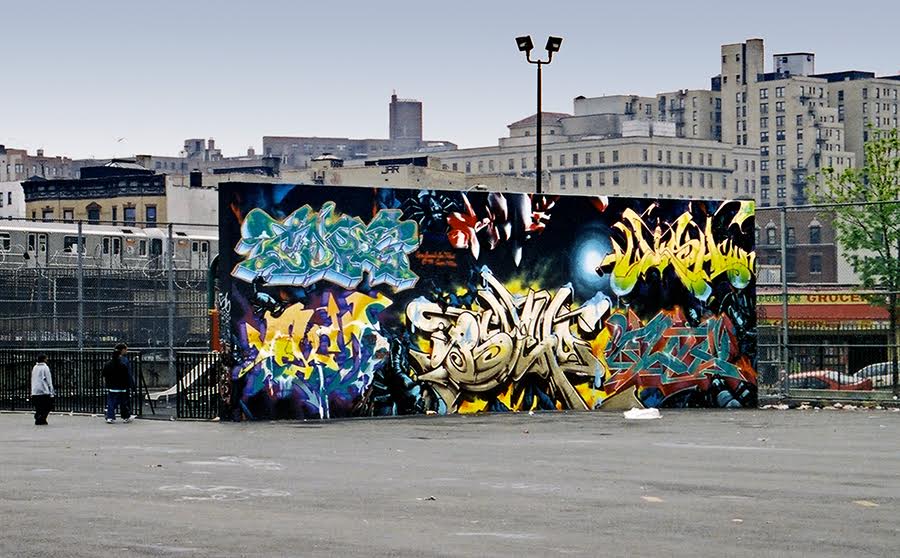
It’s all about fame-is the way I look at graffiti. I mean everything that I do in my life is related to graffiti, otherwise I don’t do it. In this world you have to stay on top, otherwise you’ll be forgotten. I happen to be one of the lucky ones. I wasn’t the first graffiti artist in the world and I know I’m not gonna be the last, but my name travels around the world. And I can honestly say, without tooting my own horn, that I am the world’s most famous graffiti artist that people recognize throughout the world. It ain’t easy keeping that because there’s a lot of things you’ve got to do and keeping it real and getting up and still staying out there. You can’t just quit and say, okay well that’s who I was. It’s not like that, there’s a reputation to uphold. So I’ve got to continue getting my name out there. You know, you gotta be in it to win it. Just like Lotto. – SEEN

Artist: COPE2
When I go to paint a wall, I bring like 2 crates of all different colors. When I get to the wall, I look at what’s in the crate and I just take what looks good and use it. Whatever outline comes out my head as I’m doing it, I just do it. That’s it. It’s very simple. People say to me, “Yo, if you sat down and sketched you’d be awesome”, which I know I could, but I don’t stress that. People sleep on me man. I can burn too. I can get loose. I got my own style. I always do my pieces right out my head. – COPE2

Tracks
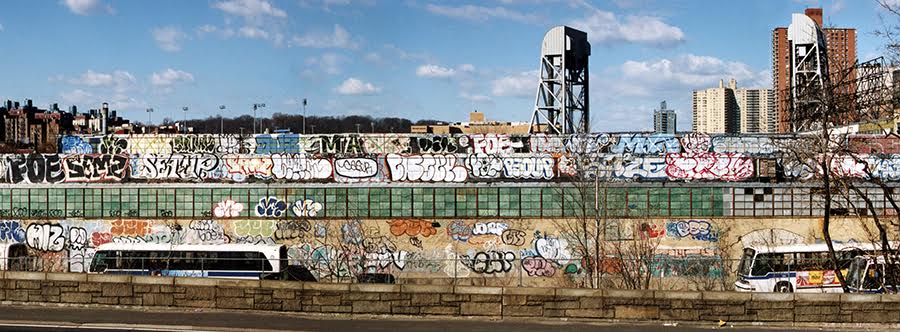
The Bronx

I think I always came from more of a figurative angle with how I paint. So I never really stuck to a specific style of lettering. I was more into making the pieces look more like a figure and become part of the background or part of the theme. I wasn’t interested in letter structure per say. I was more interested in making the letters create a scenario or tell a story for me. That’s why each piece looks different. I paint more figuratively because I think figures play a real large part in the creative process that I developed as an artist. – EZO

Artists: BG183, HOW, DAZE, NICER, BIO, NOSM (TATS CRU)
If you wasn’t back in the era where graffiti was on the trains you missed a lot. Me and my partner, CEM 2, along with the TATS CRU painted a lot of trains. I painted a few trains with SEEN and it’s an honor and a privilege to paint with him because he is a top graffiti artist in the Bronx. If you missed that era of the trains then so be it. Those are things that will never ever come back. It will never happen again. You still have people painting trains illegally but nobody will ever see them. They may get their photos or talk about it but it won’t ever run from one end of the city to the other. – KENN

Artists: WIZART, ABES, KINGBEE, SWIFT by VASE, RATH, M31 (UW)
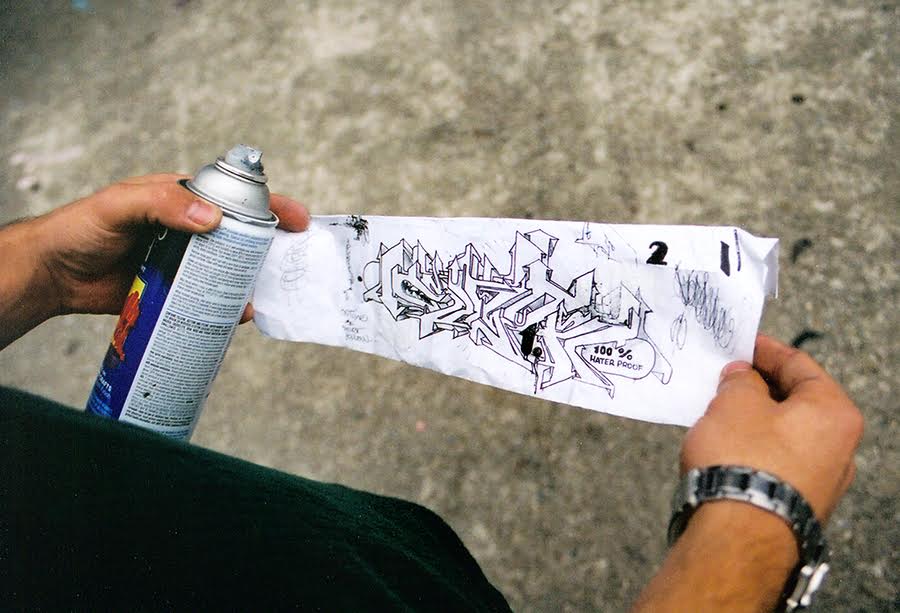
Artist: EWOK ONE 5MH
You can’t let it bother you when people go over your stuff. You kind of just expect it to happen. So long as I have my flicks, they can do whatever they want. I don’t care, it’s all fun and games to me. You know, it’s just the way it is. If you’re not getting dissed, than you’re not getting on people’s nerves, so then people aren’t taking notice of your stuff. – EWOK
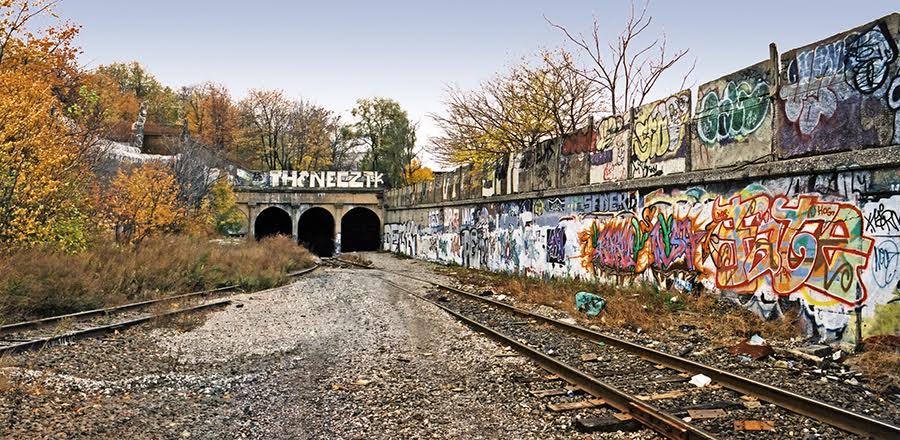
Tracks

Artist: FREEDOM
And I think this is a beautiful story. SMITH took the #1 train down from 242nd Street to the South Ferry and all along the way, he stood in between the cars and let a little bit of the ashes fall out. And then he gave me the other half and he said, “You know, when you do a painting that would mean something about SANE, then scatter the ashes down there because that’s where he would want his ashes scattered. So that happened in like 1991 and I had the ashes kicking around my house for a long time. And I remember talking to my girlfriend at the time, “Jeez, I have his ashes here and I really feel like I should scatter them, but I don’t want to just do a fake painting just to scatter his ashes. And her thing was, “Look, you know, LEE is coming over here and CRASH is coming over here and all these great graffiti artists that SANE loved so much… so it’s just like he’d be more than happy to be here for a while.” So that was cool, and then I didn’t think about it much. And then in 1996, I got word from the Coalition for the Homeless that Andrew Cuomo was able to get 8 or 9 million dollar s exclusively earmarked for the “Mole People” who were living in the tunnels. And I got very active and involved in trying to get a lot of those homeless guys out of there. And the deal that was stuck with Amtrak, was that Amtrak was going to seal off the tunnel on July 2nd 1996 and this was six months prior to that so that everybody would have plenty of time to get out. And what they offered was $750 towards their rent in an apartment anywhere they wanted for the next 5 years, which is a pretty sweet deal. But the irony was that the guys did not want to leave. And a lot of people did not take the deadline seriously and they really had to drag them out. So when the time was ending, I mean, it was really coming down to a thing where the tunnel was ending and all these people who I had documented and lived with and talked to and did drawings and paintings of…and my own works were really going to come to an end. Because I was not looking forward to running from the cops to make paintings and I really hadn’t done a painting down there in a few years…. So I kind of had to sum things up and I got the idea from Dorothea Lange, the Great Depression era photographer who did a wonderful shot called “Buy American.” And it’s the nuclear family, this really happy family. And dad is in his car driving along and his wife is sort of beaming at him and there is a little kid, and below that is an image of a bread line in the 1930’s and all these people are standing there hovering, waiting for bread. And it dawned on me that I was from a generation that was reading history books that showed depression era images and those sunk in. And there was the Great Depression and there were depression era images, but it had never really come full circle. I mean, I would sit outside a church on 86th and Riverside Drive and I would draw these homeless guys waiting on line to get a hot meal. And yes, it’s a different set of circumstances than the bread lines of the 1930’s Depression, but the images are essentially the same. I had the realization that history had repeated itself, at least visually, from the Depression. And I felt that that should be the image for my final painting in the tunnel. But I felt that I didn’t want to portray the homeless that way. I didn’t want to hit you over the head with the homeless like that and have them all lined up. So I drew the nuclear family instead, and cropped out the bread line. But then I knew I had to make some reference to the mole people because there was no way of getting around them. So I painted Dick Tracy grabbing the mole and pushing him down. And on the left of that is the Coke sign and then there is a portrait of Bernard on the far left and a portrait of Bob on the far right (2 homeless men who lived in the tunnel), each one looking one direction, one south and one north. And at the very end is the SANE piece that SMITH did, which had an American flag theme through it. I painted everything but the SANE piece. I mean, I could have done the SANE piece, but I wanted SMITH to do it because I felt that it was more appropriate. And when I finished painting, I put SANE’s ashes in front of the entire mural. – FREEDOM
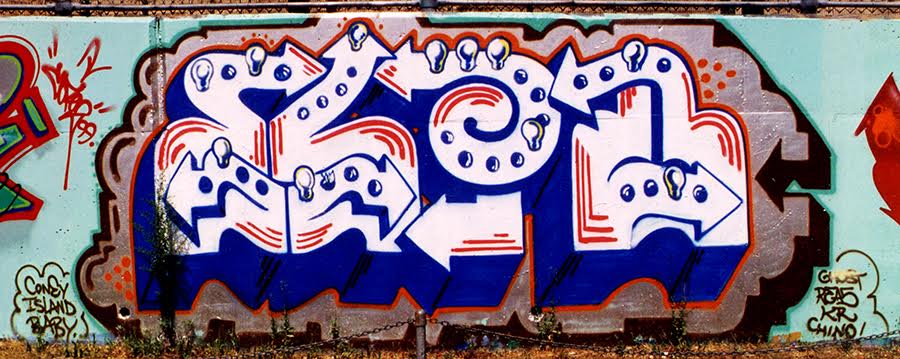
Artist: ESPO
The dynamic now in NY is between legal walls or productions and the other end of it is the same balls out illegal graffiti. Most of the illegal graffiti isn’t really focused on style or form. It’s mostly just function, as getting up, being seen and being as aggravating as possible. There are a few people that really kind of bridge the distance between form and function that do really nice looking things and do them illegally. Those people are obviously the ones I’m feeling the most. I think being illegal about it and being careful about what you do and understanding the adrenaline that goes into doing things where they don’t belong is really what it’s about for me. And I think for most people, even if they paint legal walls, they need some kind of illegal remedy to kind of balance out the legal end of what they do. – ESPO
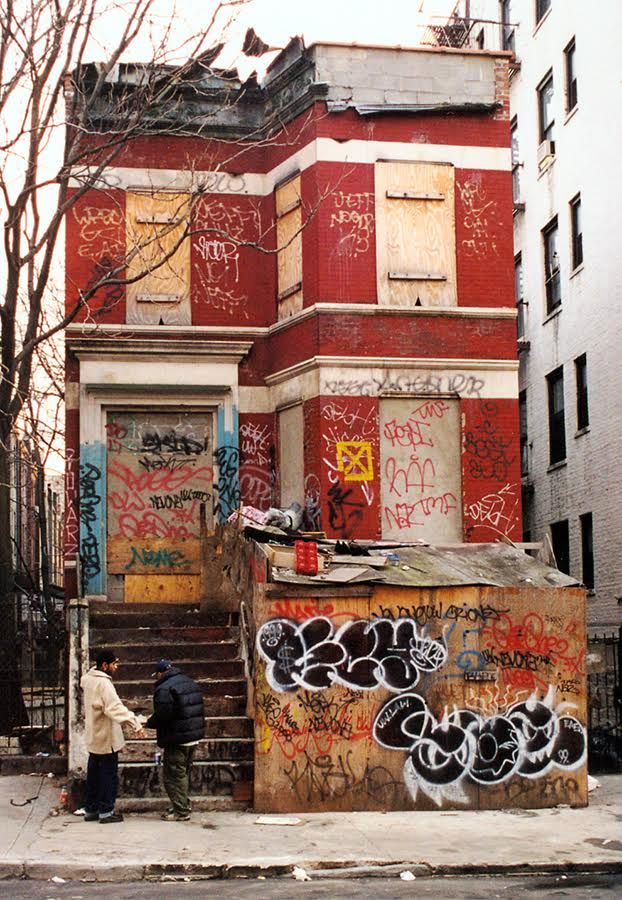
Artists: KINGBEE, VASE (UW)
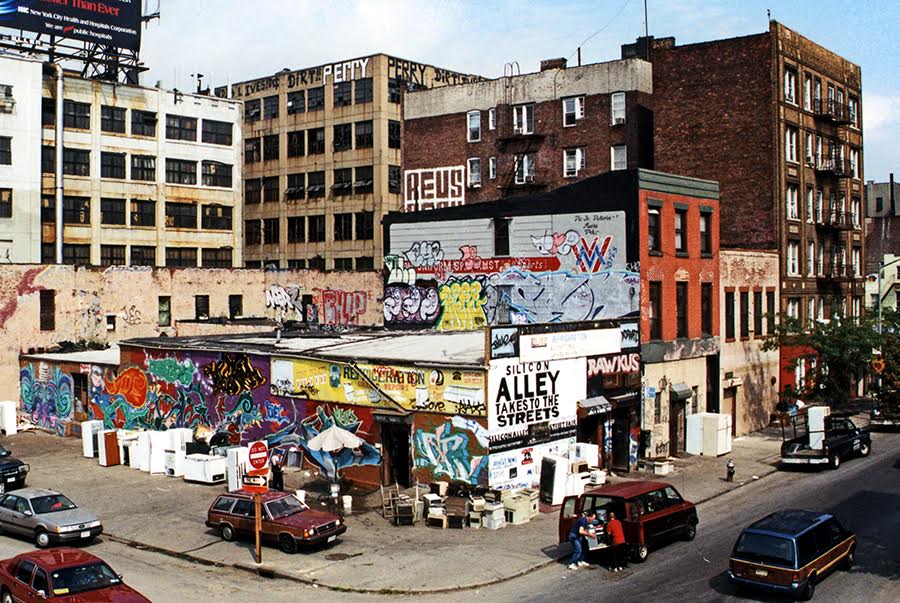
All photographs and text © James and Karla Murray.
Next, check out James and Karla Murray’s books:
The Disappearing Face of New York and New York Nights. Also see Food Tour of the East Village’s Historic Storefronts with James and Karla Murray and Photos Series “Store Front II” Documents NYC’s Endangered Small Businesses.
Subscribe to our newsletter